Easy to identify, with no real look alikes (if you pay attention) crown-tipped coral mushrooms have a good yield and the bonus of looking like a life form from under the sea. They're a great mushroom for beginning foragers to learn.
Below: Crown tipped coral mushrooms Artomyces pyxidatus, formerly Clavicorona pyxidatus.
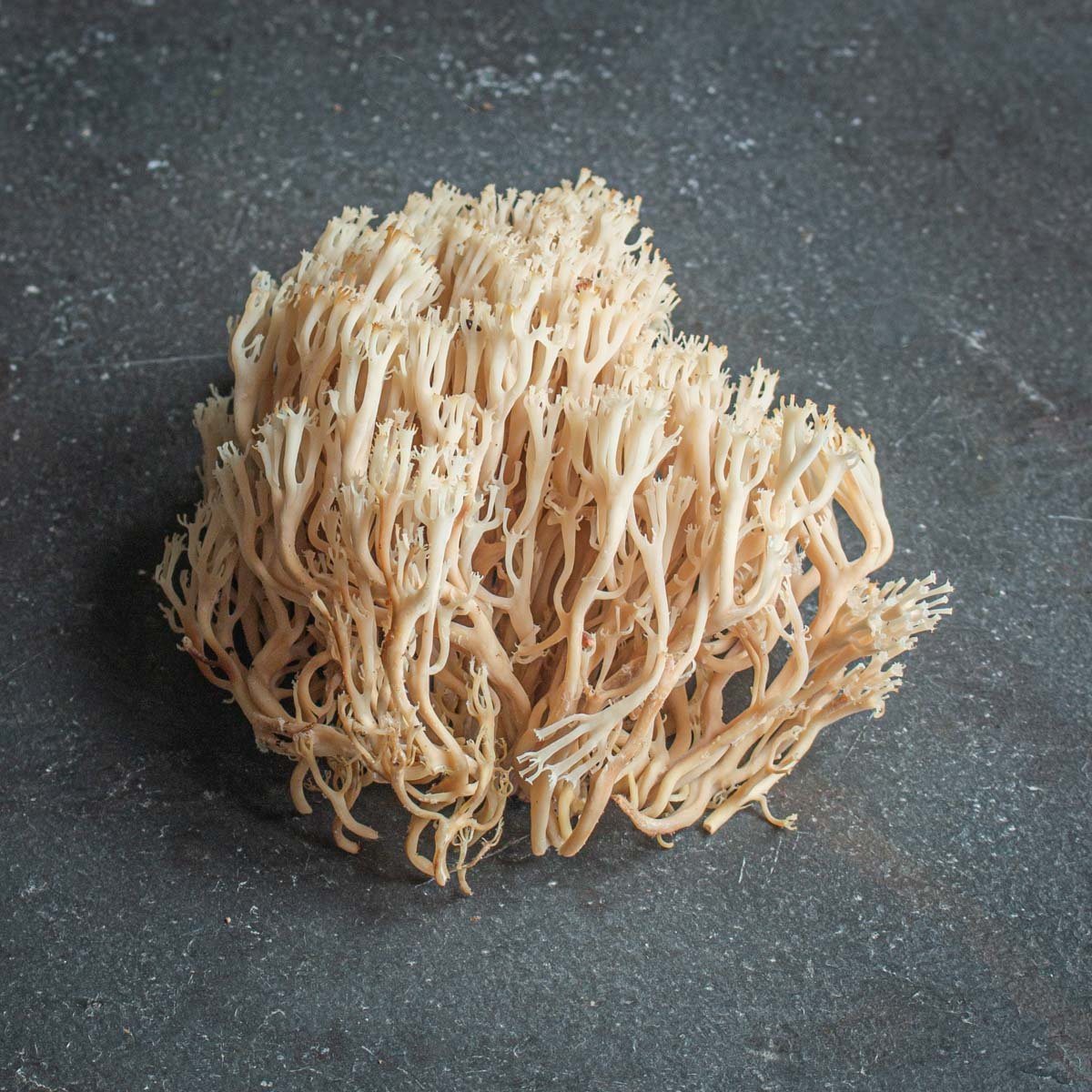
These are a common mushroom to see during June in the Midwest when mushrooms can be scarce. I used to harvest them regularly for soups on chef's table menus.
Below: Artomyces pyxidata (formerly Clavicorona pyyxidata) the crown tipped coral is much more delicate than ramaria species, although they look somewhat similar.

Below: crown corals have a small "crown" formation at the end of the branching tips.
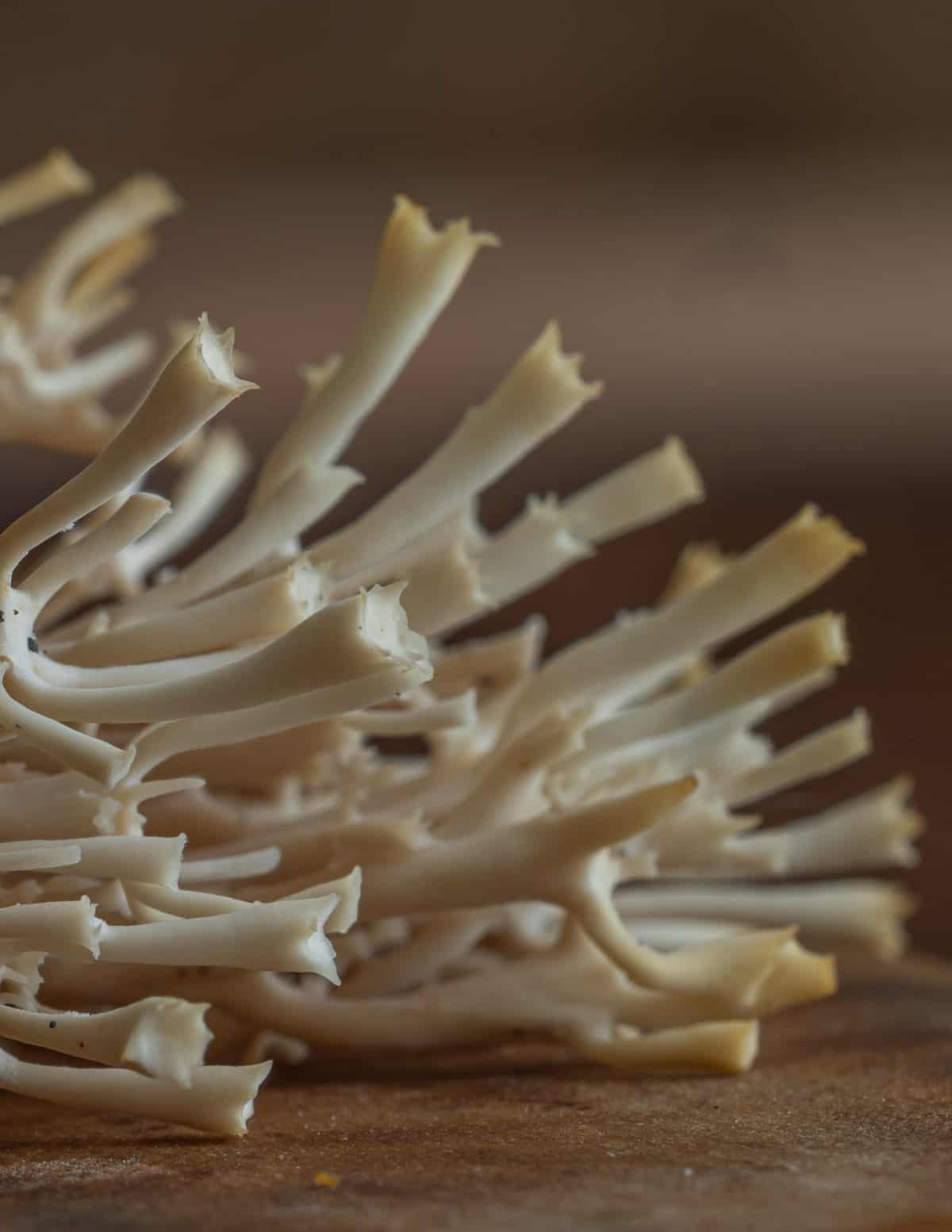
Crown Tipped Coral Mushroom Identification
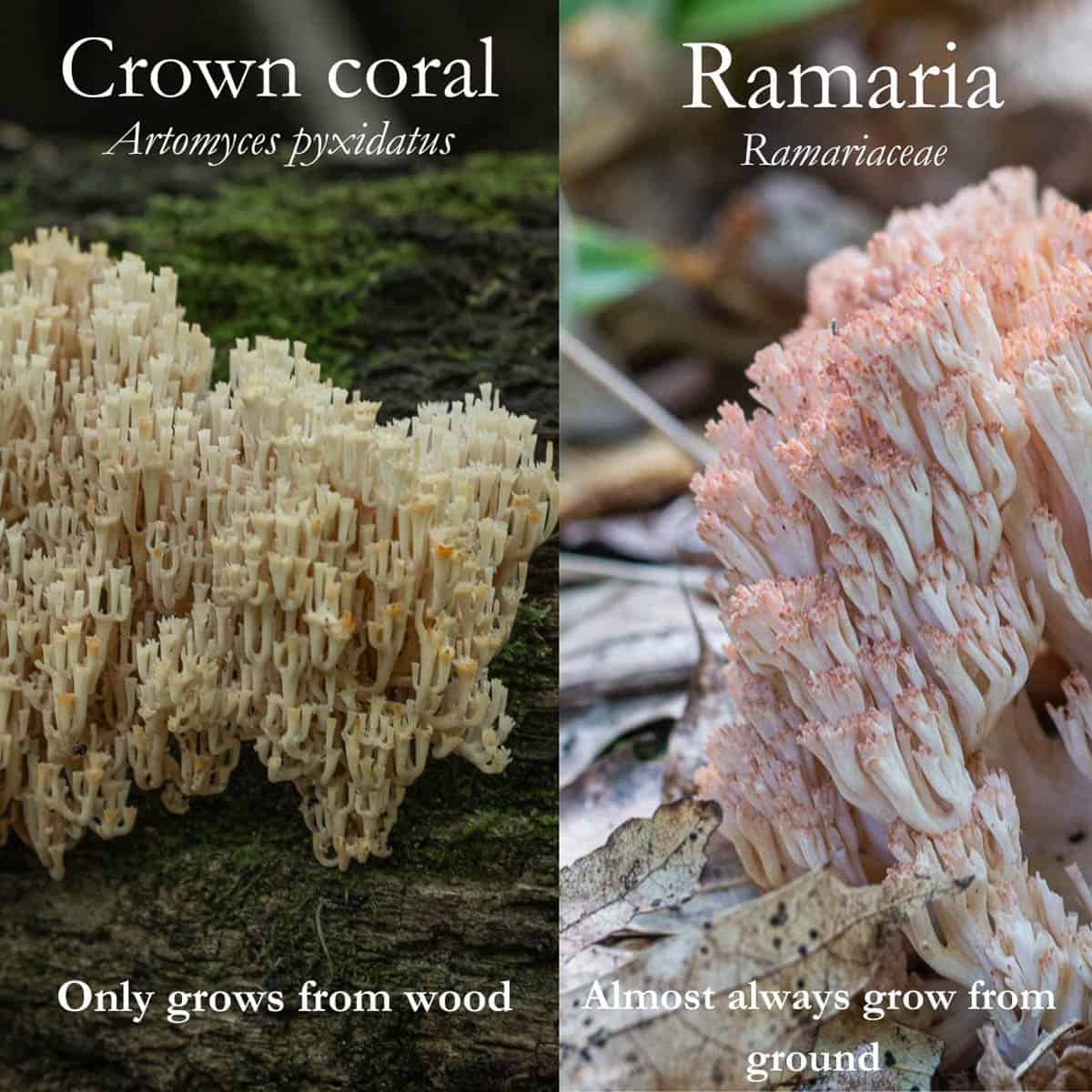
As far as coral-type mushrooms go these are easy to identify. Here's the biggest things to know:
- Crown-tipped corals grow directly from wood, not on the ground, although it could be possible to confuse some as growing terrestrially if they're coming from a buried log.
- Crown-tipped corals are looser in structure than Ramaria and much more delicate.
- Crown-tipped corals are always white, or a shade of dingy white due to age. The base of the mushroom where they attach to the wood will be brown and the tips turn rust-colored with age.
- Ramaria mushrooms grow directly from the ground the vast majority of the time, and come in a variety of colors besides white. I have never seen one growing from wood, but it's possible. Compare the pictures below a few times-the differences are easy to pick out.
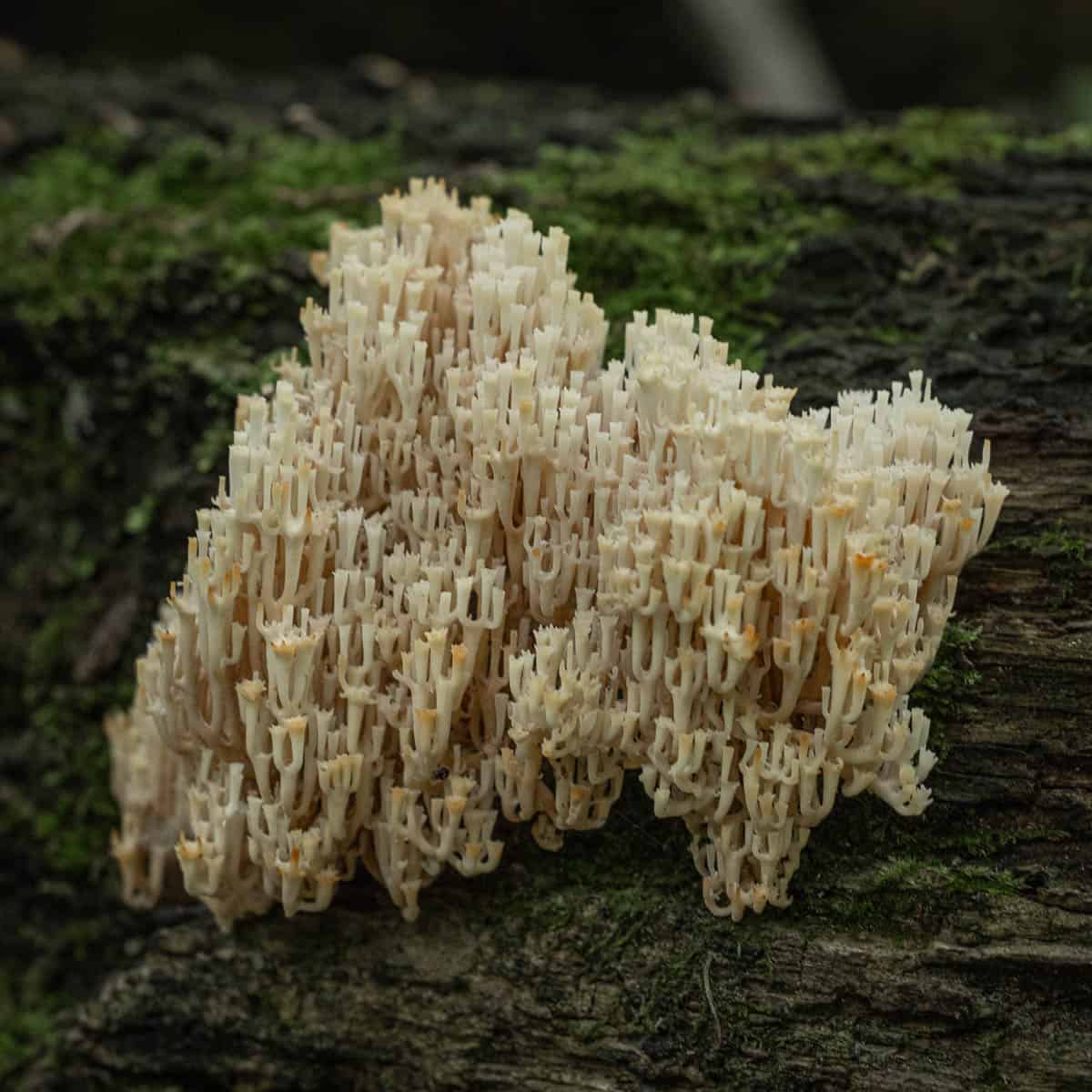
True crown tipped coral mushroom. Growing directly from wood with a white color.
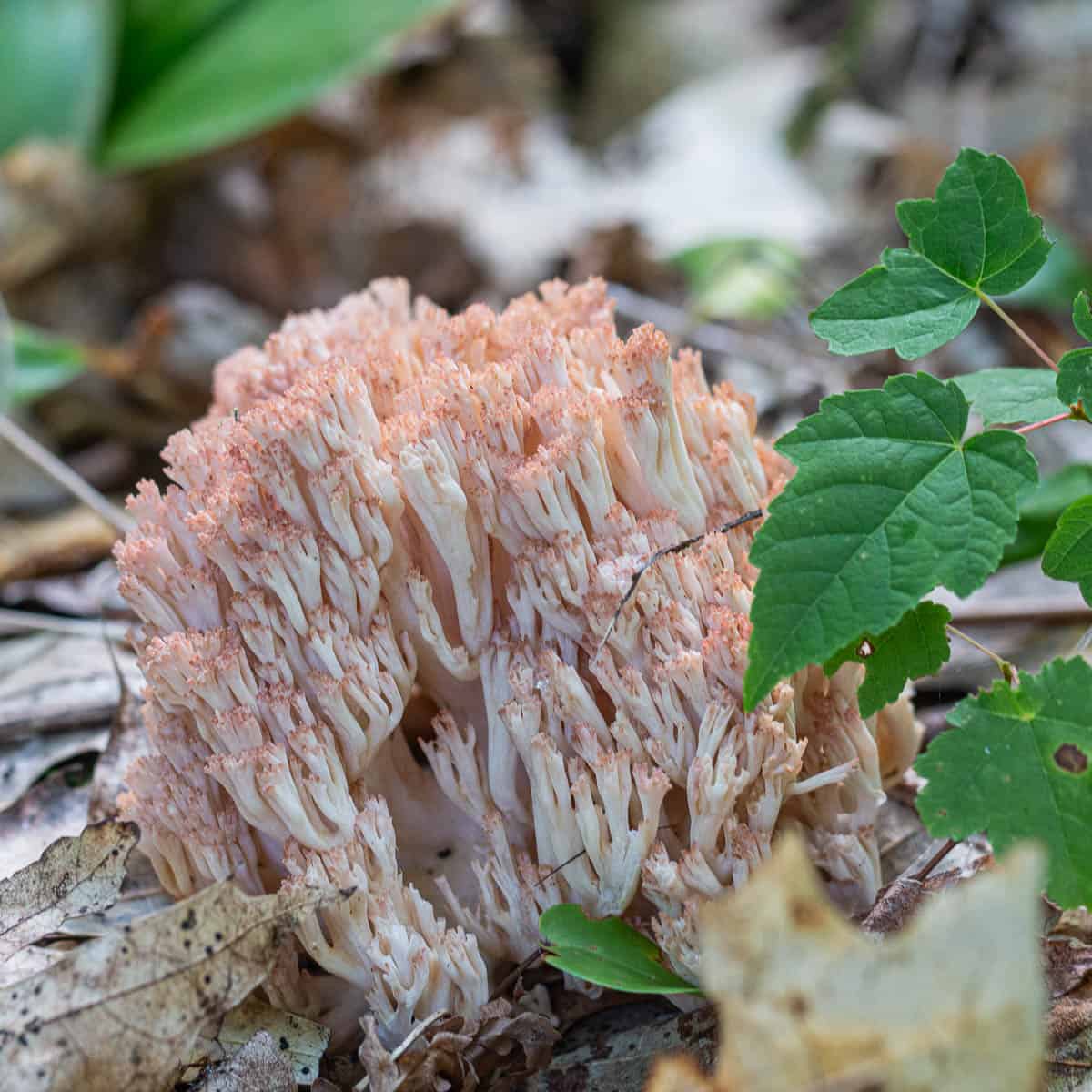
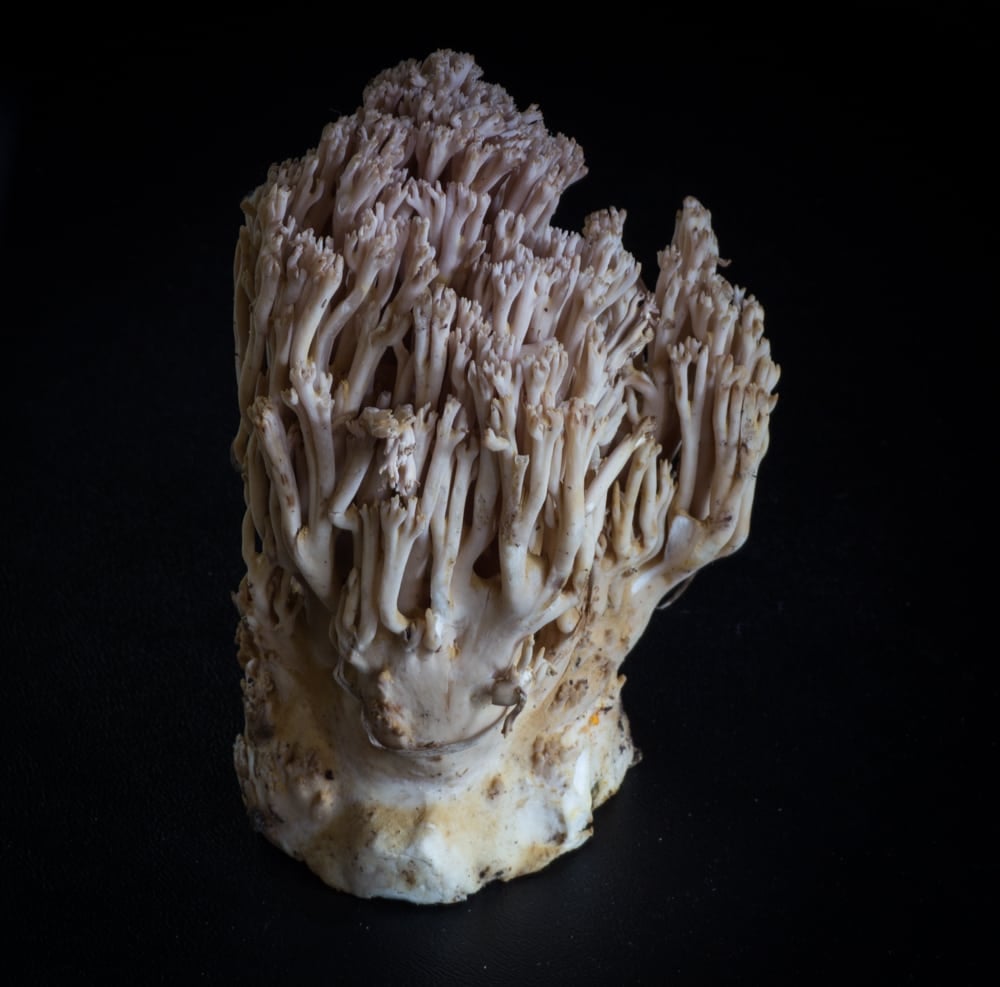
Crown Tipped Coral Mushroom Look A likes
There are other mushrooms that are not good that could be confused with these, such as Clavaria and Ramaria mushrooms. My advice is:
- Remember crown corals never grow from the ground.
- Don't pick any that have a scent of Phenol (embalming fluid) or smell bad in general.
- Don't pick any that have a gelatinous or liquidy/slimy base.
- Don't pick any corals that are colored deep red. (there's reputedly a deadly Japanese coral that's red-but that should be considered anecdotal).
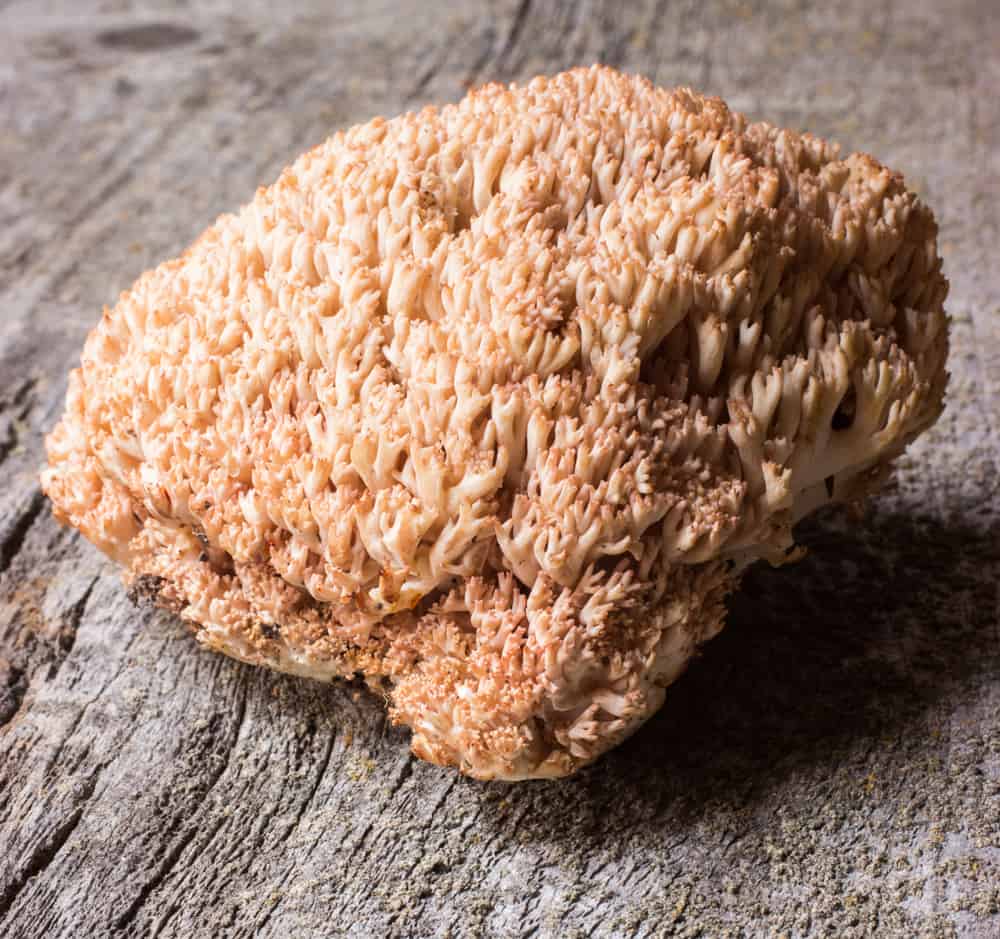
Above: Ramaria botrytis, a different type of coral mushroom in the Ramaria family. Note the firm structure compared to the crown tipped corals.
Below: Purple Coral Mushrooms (Clavaria zollingeri) are listed as inedible.
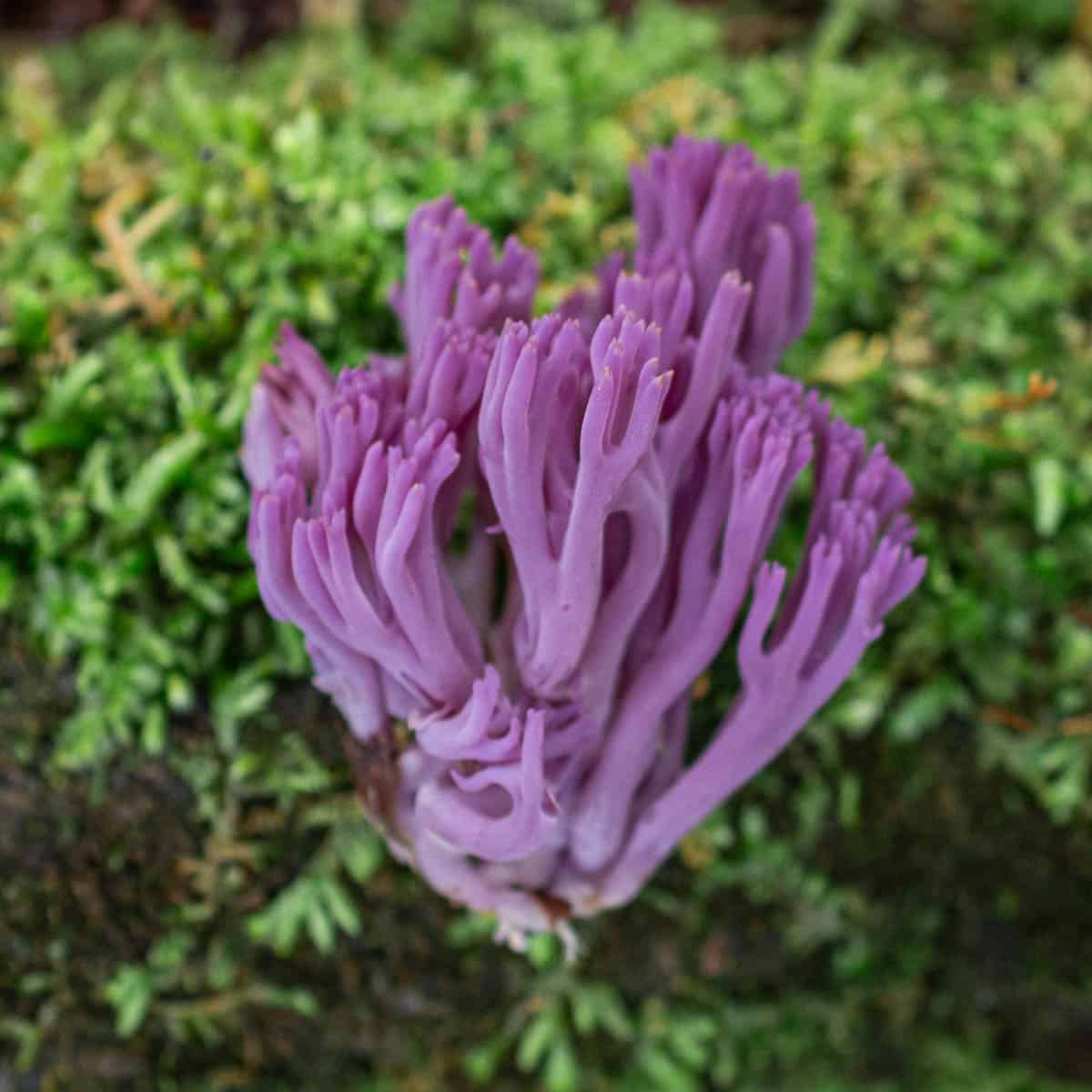
Where to Find Crown Tipped Coral Mushrooms
These mushrooms grow only on dead and dying wood like oak, especially mossy decaying logs. Crown tipped corals will not grow directly on the ground like Ramarias. I see them in the early and late summer in Minnesota and Wisconsin, starting in Early June.
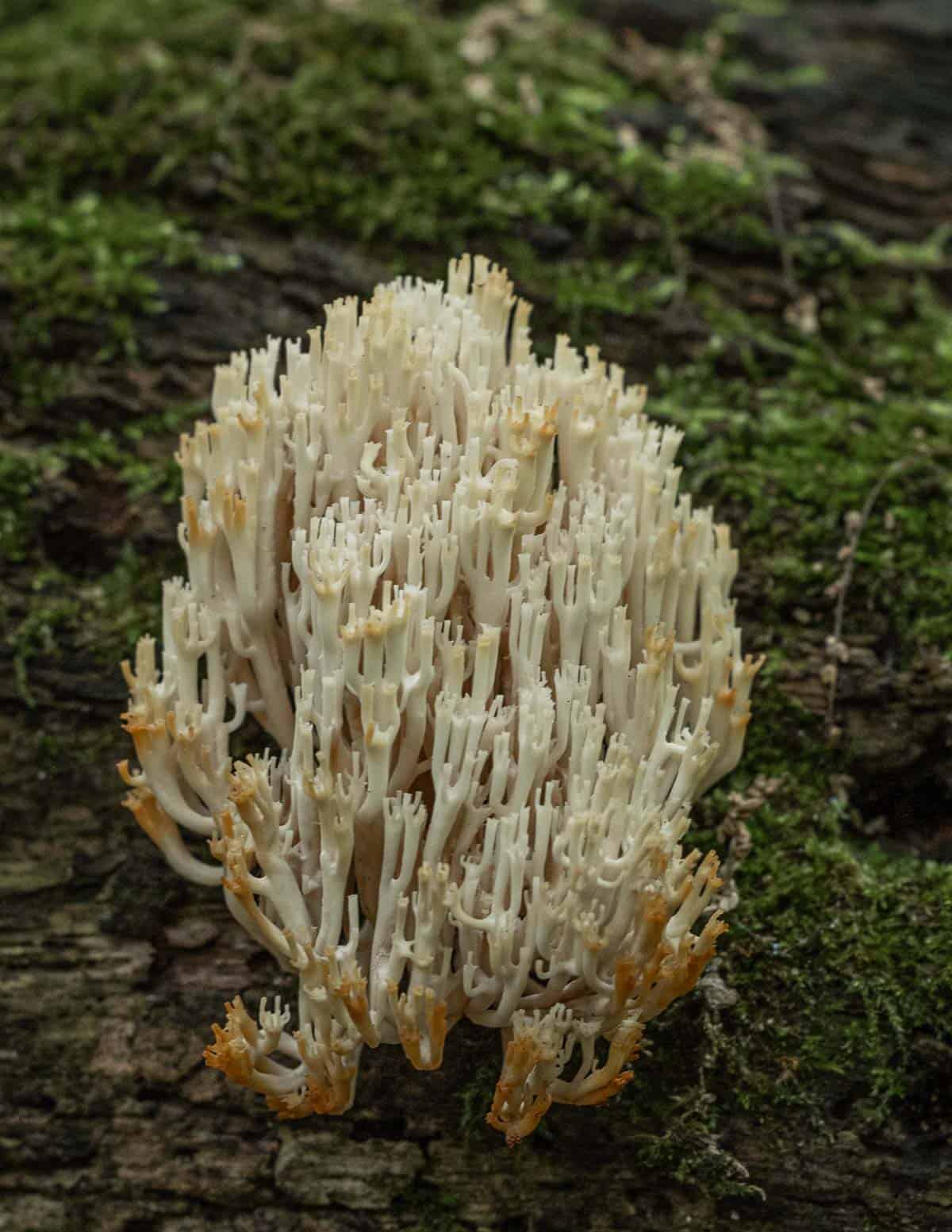
How to Cook Crown Tipped Coral Mushrooms
These are ok to eat, but they're not incredible. They have a mild mushroom flavor and are best used in soup. Crown tipped corals cook really fast and can be a pain to clean since debris and dirt can get lodged in them.
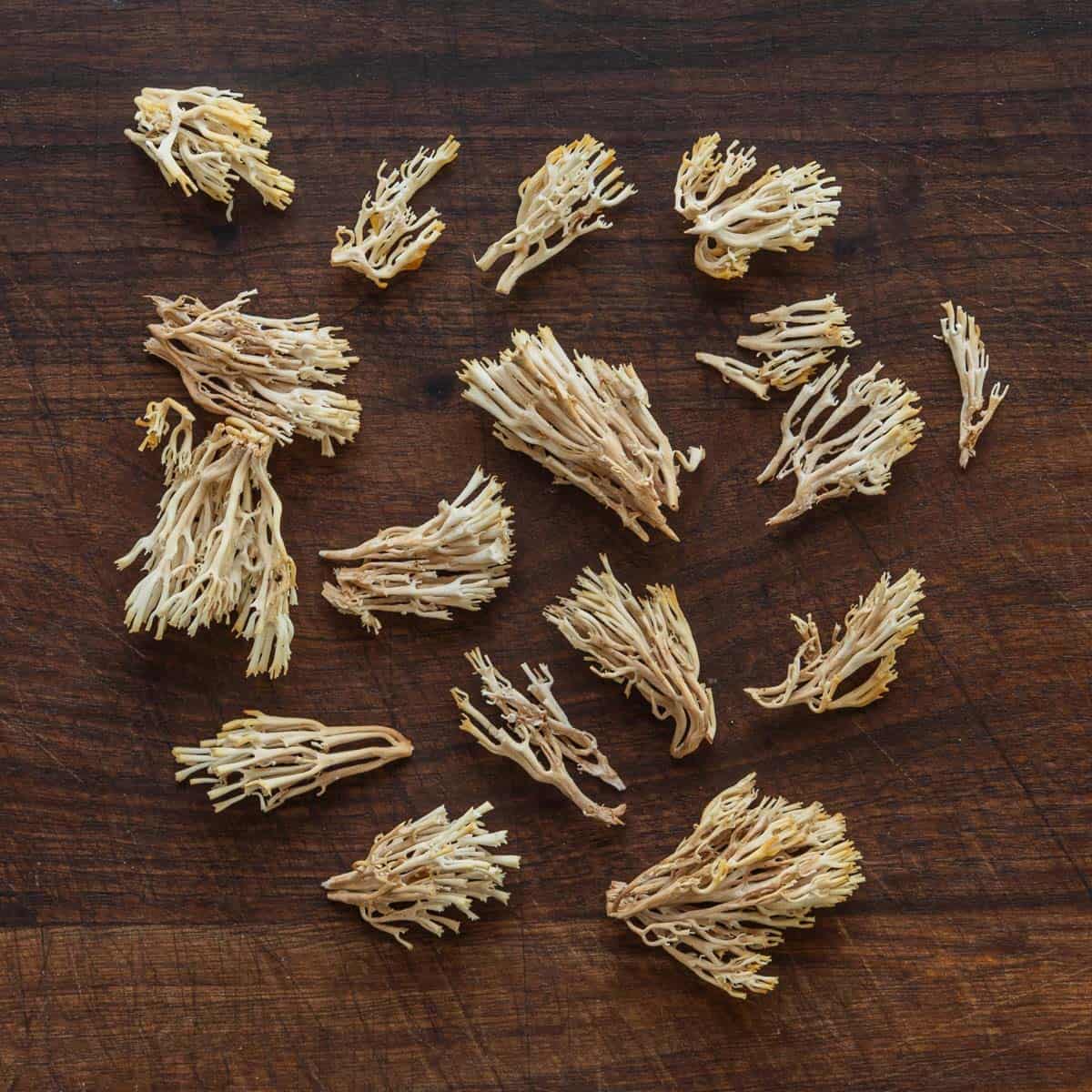
To clean them I break the mushrooms into small clusters and swish them quickly in cold water. Afterward I set them on a cloth or towel to dry in the fridge.
If I come across many of them I might make croutons by tossing them with cheese, flour and herbs and baking, pictured below.
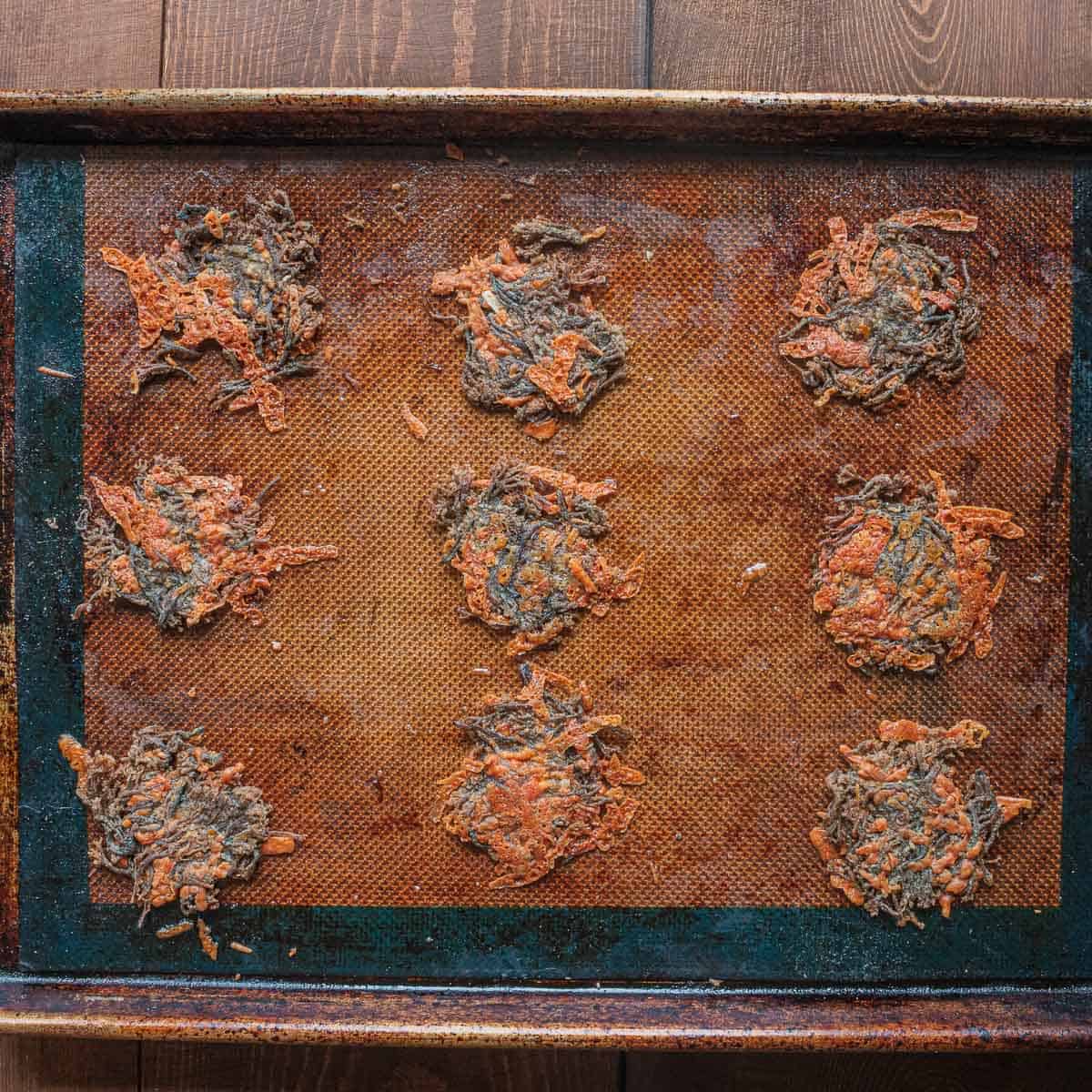
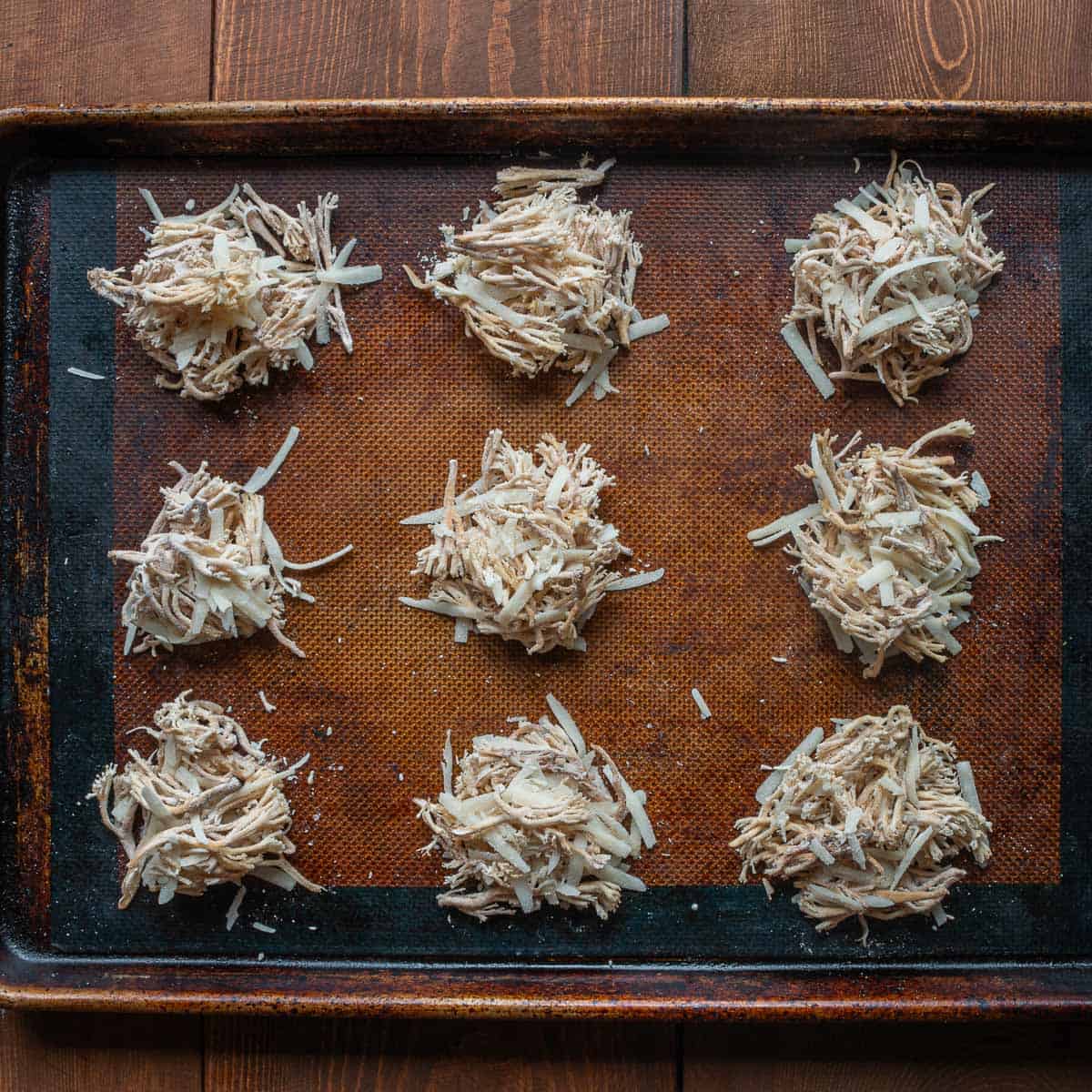
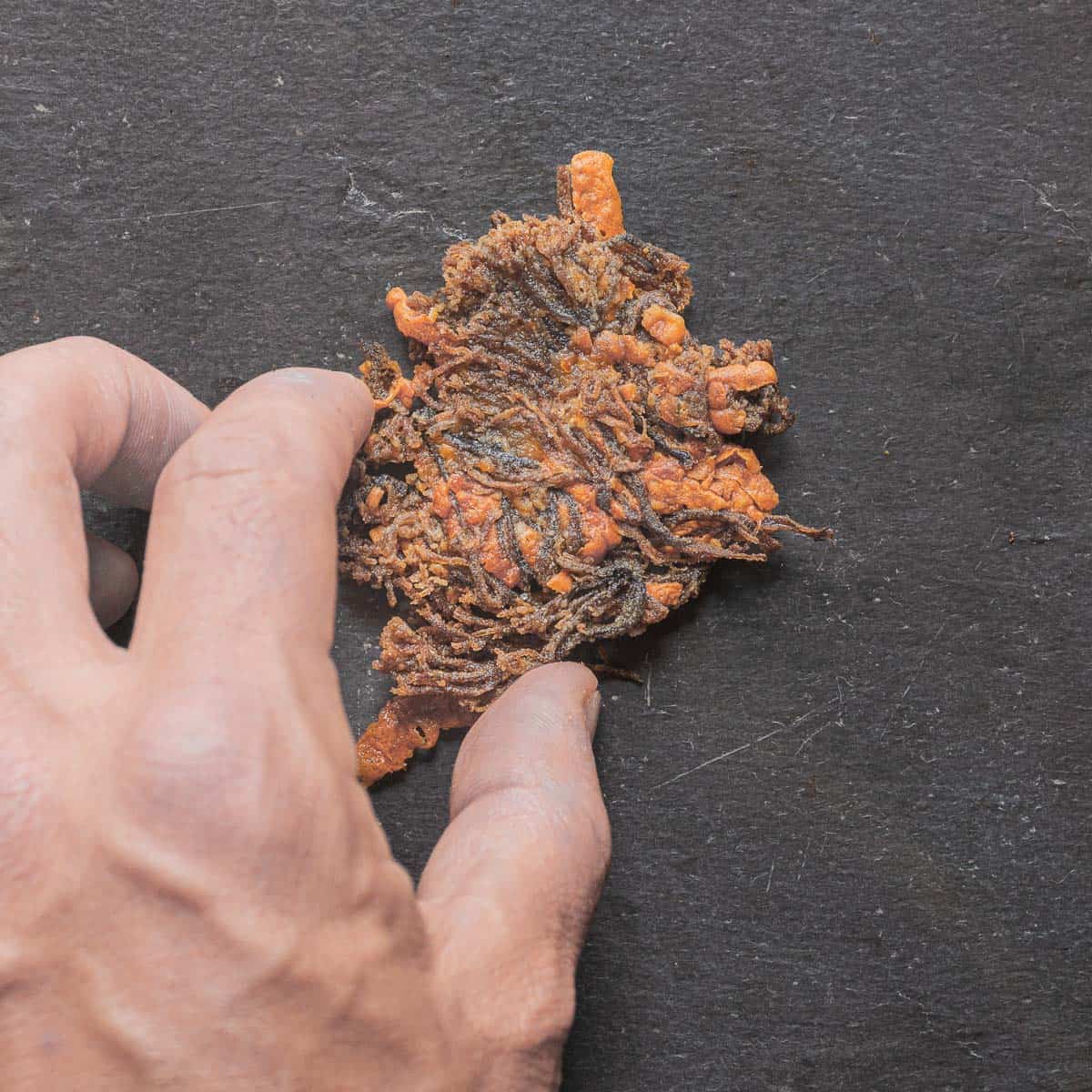
Cooking in Soup or Broth
Cooking in soup or broth is one of the best ways to prepare these, just like I recommend doing with yellowfoot chanterelle mushrooms.
Below: rabbit broth with hominy, mitsuba and crown coral mushrooms.
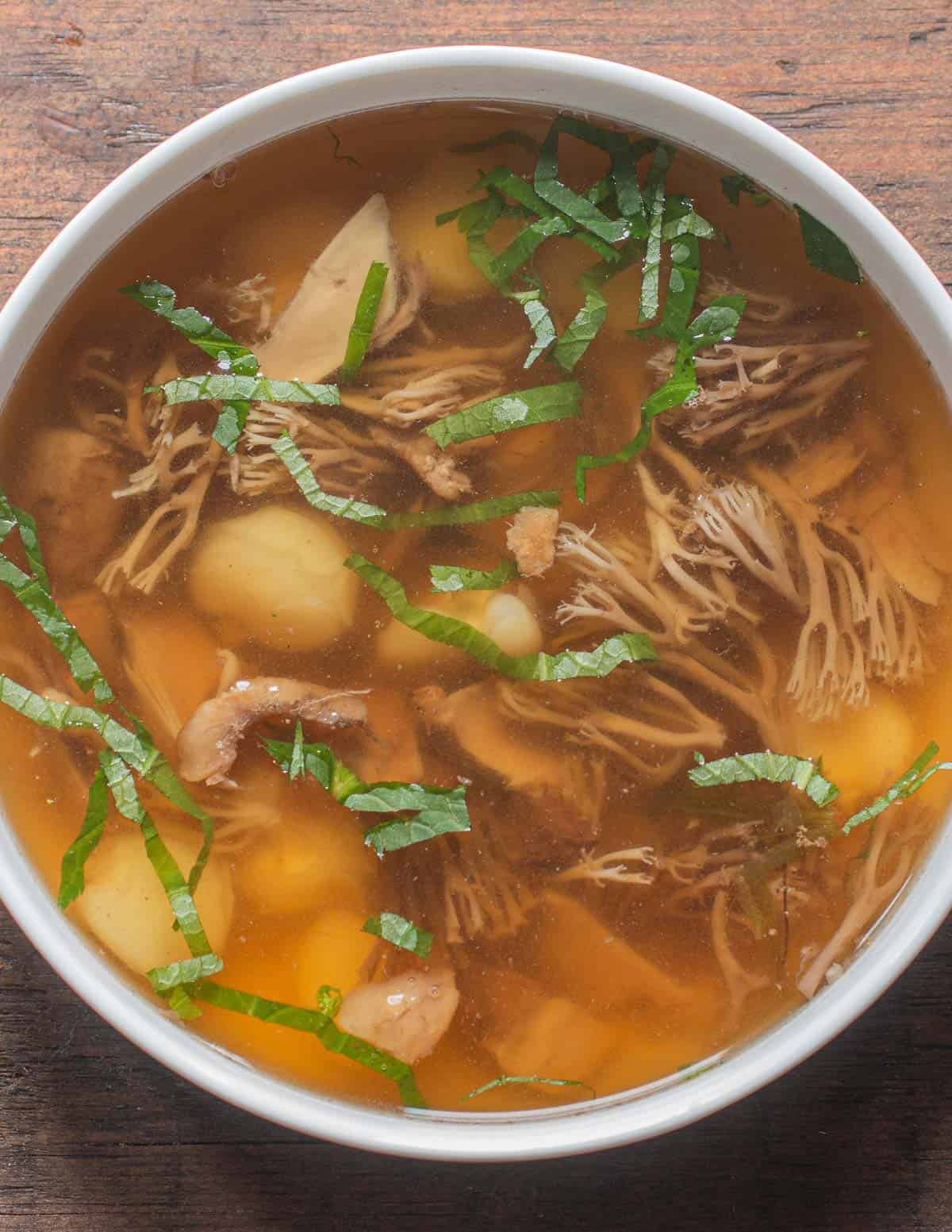
Cooked in a soup or broth they'll retain more color and texture. Clear broths like Japanese soups are the best way to use them.
Below: making my crown coral noodle bowl.
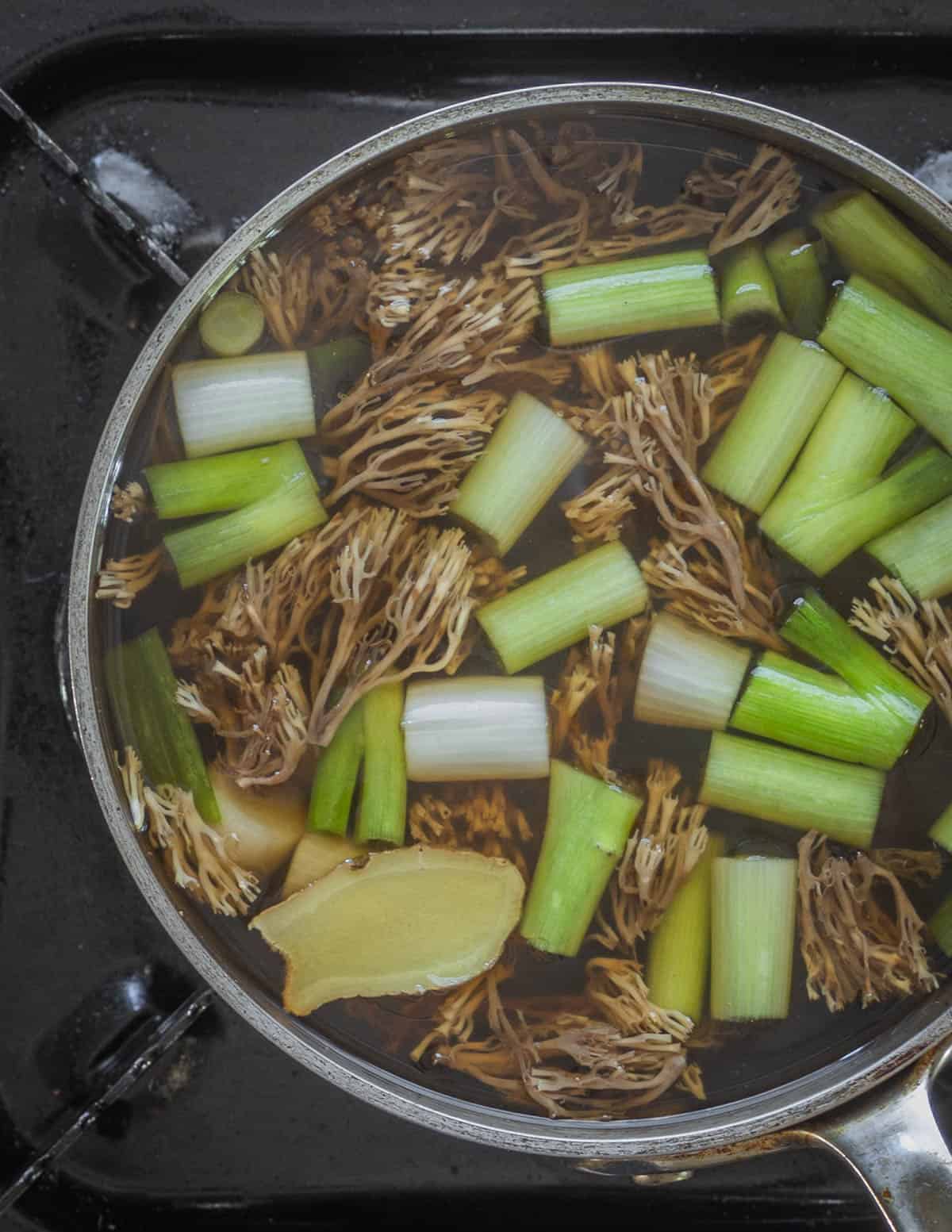
Preservation
These do not dry well, the smell changes a bit and gets kind of "gym-sockey", from my experience. If you want to pickle them I would make sure to separate them into large clusters.
Freezing the mushrooms by sweating in butter with a pinch of salt and freezing in a zip-top bag can work, but they're best eaten fresh.
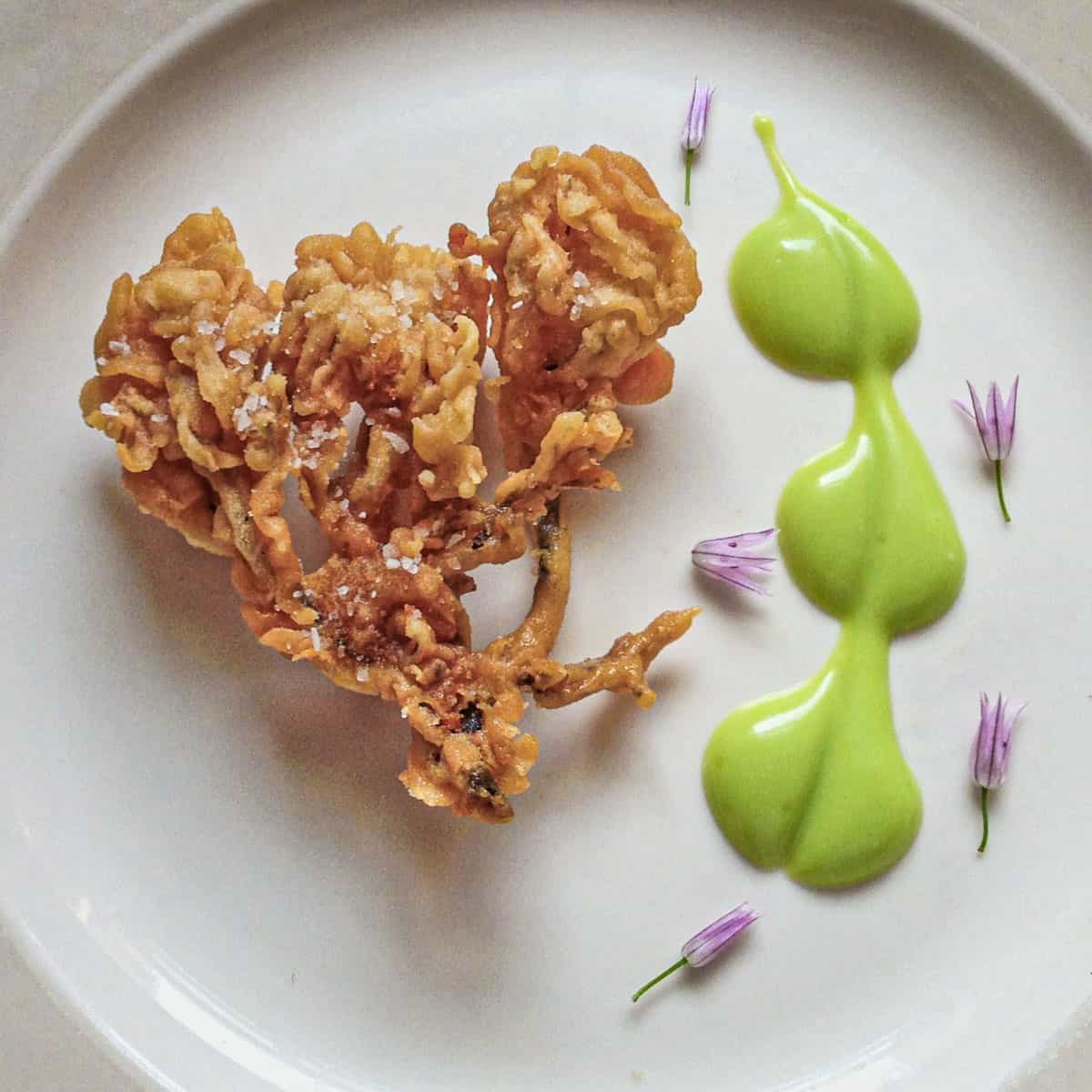
Above: Crown corals make a fun, crispy garnish.
Coral Mushroom Recipes
Recipes for crown corals, or where they can be substituted easily.
- Crown-Tipped Coral Mushroom Croutons
- Wild Mushroom Conserve
- Wild Mushrooms With Garlic And Parsley
- Wild Mushrooms With Breadcrumbs, Garlic, And Chili
- Crispy Fried Crown Coral Mushrooms, Chive Aioli
Crown Coral Mushroom Noodle Bowl
Equipment
- 1 2 quart soup pot
Ingredients
Broth
- 6 cups mushroom broth or chicken broth
- 6 oz carrot cut into 1 inch julienne
- 4 oz scallion cut into 1 inch pieces
- 1 ¼ inch slice fresh ginger
- 5 oz fresh crown coral mushrooms cleaned and pulled into bite sized clusters
- ½ cup soy sauce or to taste
- Tiny pinch of crushed red pepper flakes
- 4 oz fresh wild greens shredded
- Kosher salt to taste
Serving
- 20 oz cooked soba noodles 5 oz per person
- Toasted sesame oil
- Chopped fresh cilantro
- A few nasturtium flowers pictured, but optional
Instructions
- Bring the first 7 ingredients to a simmer in a tall 4 quart saucepot. Simmer for 20 minutes or until the vegetables are tender.
- Add the greens and cook for a minute more.
- Taste the soup and gauge the seasoning. If you used chicken stock from a package it may not need any seasoning. If you use homemade stock you’ll probably need a pinch or two of kosher salt.
- Soba noodles
- I like to cook the soba noodles in lightly salted water in advance, rinse them in cool water, then toss in a little sesame oil to coat and hold them until I need them.
- The can be stored in the refrigerator in a covered container for a day or two. To serve the noodles can be portioned into bowls, reheated quickly, covered in the microwave to take the chill off, and you can ladle the (very hot) soup, vegetables and mushrooms over the top.
- Drizzle the soup with sesame oil if using (no need to garnish with it if you toss the noodles in some) along with the chopped cilantro (if using). Garnish with a few edible flowers and serve with chopsticks.

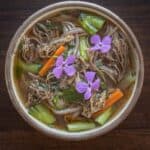
davidf
like to know how to definitively identify if this is what I found
Alan Bergo
These are easy to identify. Re-read the post, or google mushroom expert and check Micheal Kuo's description. Also make sure you're using field guides to cross reference information.
John J. Williamson
I used your crispy fried coral recipe on some wrinkled club that is plentiful here in the UK. really good and the batter helps keep the fragile flesh together. Perfect
Alan Bergo
Thanks John. I enjoy Clavaradelphis pistillaris here in the states.
Terry Osborne
Hello I'm looking for the current prices for the crown tipped coral mushrooms. Can you point me to a site that keeps up with mushroom prices.? Thank you
Alan Bergo
I'd sell for 10$ lb they're not that special as far as selling goes.
Lyndsay Black
Hello,
I just found an entire acre of these mushrooms. Literally thousands. I can't eat mushrooms, but would love to sell them. Any tips?
Ty
Lindsay
Alan Bergo
Contact restaurants and make friends with the chefs, give them the best stuff you can find, 10$ for mushrooms should get your foot in the door.
Elizabeth
July 2015 was the summer of my joyous introduction to the illusive Crown Coral Mushroom! A prior such moment was in the Spring of 1961, when I had the wonderful opportunity to meet the Moral. An aside: I was presented a large quantity of fresh-picked morels and, after soaking them in a saltwater bath to remove any riders (critters), I fried them in a 12" iron skillet with a stick of salted butter. Forthwith, I took my new-found treasure to the kitchen table and consumed the entire skillet-full. Three days later, a visiting neighbor remarked, "Oh, you're back!" Turns out, I had consumed enough of the Hallucinogenic properties present in all mushrooms to varying degrees was to put me in an altered state - nothing serious, mind you. After that, I reduced the quantity and, to this day, enjoy the Morel!
Now, back to the topic at hand - the Crown Coral! The Mushrooms first gathered were like unearthing a treasure. I was delighted to discover they were responding well to the same preparation as the Morels. A few days later, I went to the same spot on the UP Michigan spot; and, lo, there was new growth. Over the next months, I gathered more wondering when the season would end. Finally, in mid-September, fearing I might not find any more after that day, I decided to preserve this possible last batch. Now, I had always dried Morels; but, instinctively, I knew not to dry these Crown Corals. Instead, after cleaning them, after their salt bath and the removal of the last vestiges of foreign matter, I drained them overnight in a colander. Next, I placed them on a kitchen towel to further evaporate the water. Then, when still moist, I placed them in freezer bags. This was a successful way of preservation, as the mushrooms maintained their integrity! Now, after checking this site and reading that pickling was the only mentioned method, I hope to introduce freezing as a method, as well. I personally could not see pickling them. But, I am game to taste them pickled.
Happy foraging!
Elizabeth
Paul
Morels do not cause hallucinations, regardless of the amount eaten. If they do you were eating false morels, not a good idea.
Amanda
Thanks so much for sharing your recipe! I canned some last week and my family loves them. The only thing I did differently is leave the spices and garlic in and it turned out wonderfully. We found 2-3 pounds more yesterday so guess what I'm doing tonight. 🙂 Love it!
Alan Bergo
Glad you enjoyed them, are you pickling Ramaria species or Clavicorona?
Patricia A
Alan - just wanted to say a belated thank you for the recipe! It worked perfectly - and I am delighted to have been able to add this gorgeous little 'shroom to my 'winter cupboard'.... Much appreciate your artistry and generosity in sharing.
Patricia A
Delighted to find your site and see someone doing innovative things with these gorgeous fungi! I just located a wealth of Crowned Coral yesterday and, while I will be eating it in various ways 'fresh' was also hoping to preserve some for winter. You briefly mention pickling these - which I agree - would look spectacular - but, I couldn't find a recipe.... Any details of this you might share? Vinegar types? Additions? Processing time? Really appreciate any insights you have to offer.
Alan Bergo
Patricia, I put a recipe up for you.